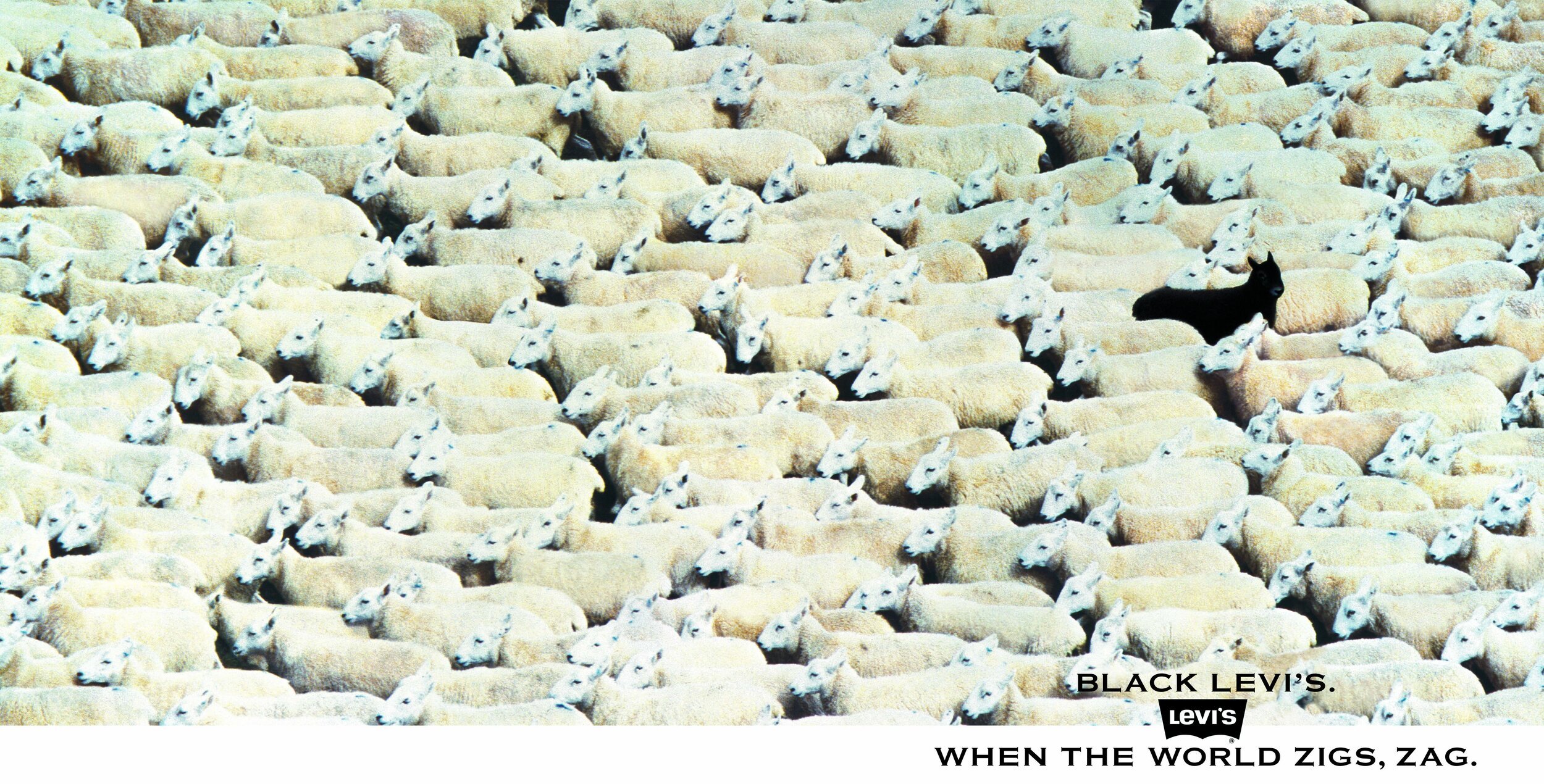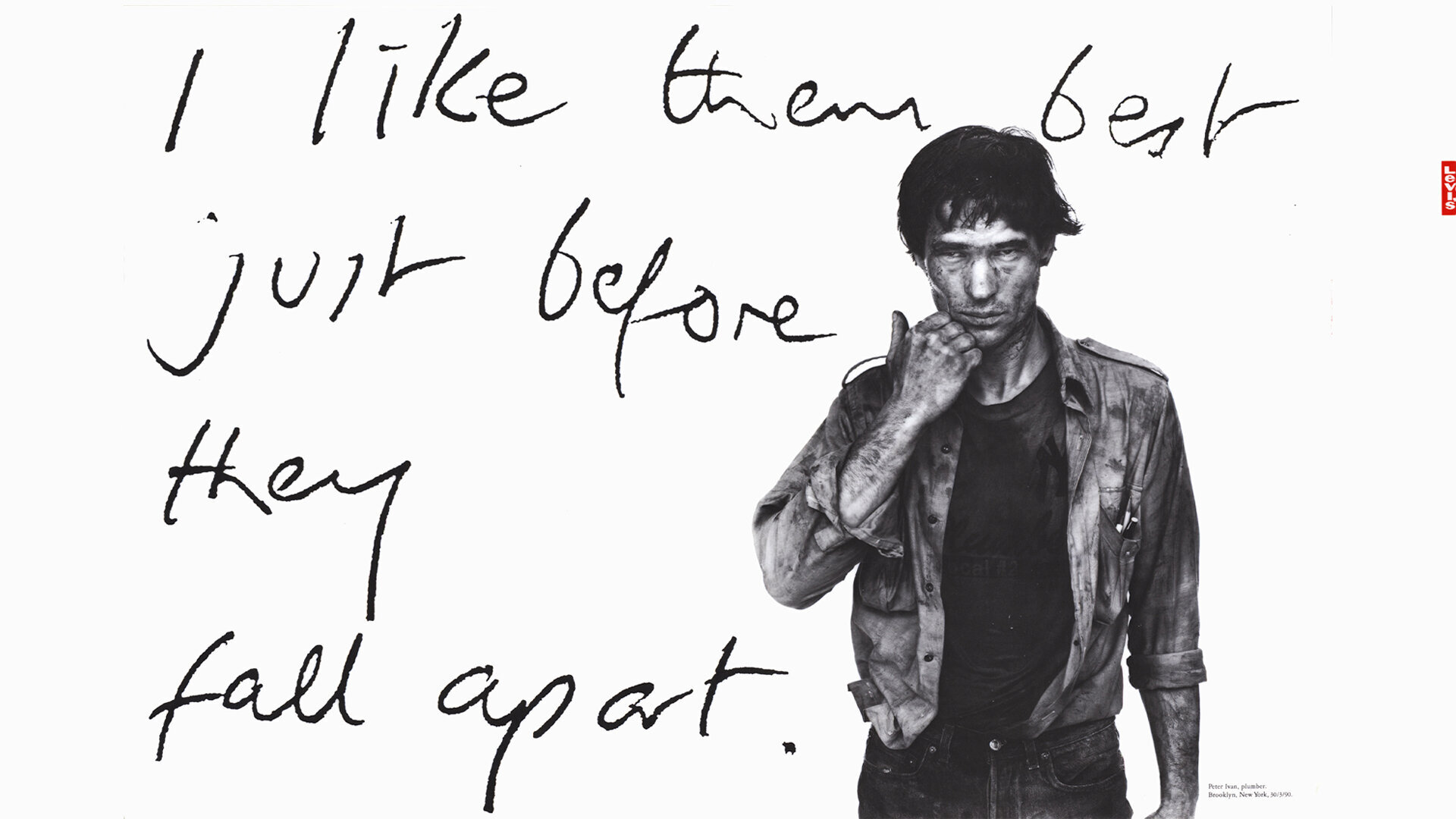
levis
a stitch in time
Capabilities:
It was the spring of '82. BBH was a new start-up with a team of eleven. John Hegarty opened a letter purporting to be from Levi's. The coolest brand in the world, asking to meet BBH? He thought it was a joke. But it turned out that the world’s most famous jeans weren’t feeling all that hip anymore. They needed some help.
Fast forward a few years and Levi’s commercials had to be taken off the air because, even working at full capacity, the company’s production plants were unable to keep pace with unprecedented demand.
In between, BBH created some of the most iconic advertising of all time, and helped shape our own brand in the process. The first brief was to launch black denim. The resulting work – the black sheep poster – became a symbol for Levi’s and went on to inspire our agency’s logo. That poster’s strapline – “When the world zigs, zag” – became our own motto.
This is the story of how we rebuilt a once iconic brand, spawned seven number one hit singles, launched the careers of Brad Pitt and puppet Flat Eric – and created advertising folklore.
800%
Sales boost after Levi's Laundrette ad
2
Acting careers launched
7
Number one singles in Europe
In the 60s, Levi’s had defined counter-culture cool. But as the 70s bled into the 80s, the uniform of youth had become a badge of middle age.
In the UK, one of the problems was the splintering of youth culture. The New Romantics, B-boys, Soulboys and Perry Boys were distinct in all ways but one: they didn’t wear jeans. In US product tests, Levi’s was associated with Ronald Reagan and sandal-wearing tourists.
Ultimately, year-on-year sales for the former market leader had decreased by 46% over 4 years. And the 501, Levi’s original jean from 1873, had suffered more than anything else.
The one that started it all. Because when the world zigs...
The poster with the sheep kicked things off, but the TV ads made it famous.
In 1985, model and musician Nick Kamen walked into a launderette to the unmistakable bass of Marvin Gaye’s I Heard It Through The Grapevine. In less than a minute, Levi's – and advertising – history was made. The 501 became the garment every teenager wanted, with a knock-on effect on boxer shorts sales.
In Swimmer, a Levi’s-wearing guy dove his way through the azure swimming pools of American suburbia, raising eyebrows and making jaws drop. The endline explained his relentless pool-dipping: “The more you wash them, the better they get.”
Creek, a black and white Vaughan & Anthea spot, dramatised the ‘shrink-to-fit’ jeans. Prim and proper minister’s daughters spy on a young man taking a dip in the river and pinch what they think are his jeans – but it turns out they got the wrong jeans (he’s swimming in his).
We recruited another directing heavyweight for Drugstore in which Michel Gondry told a wordless tale of young love with an urban legend twist. Set in the Dust Bowl American South of the 1930s, a good-looking farm boy buys a tin of condoms from a druggist and slips them in the watch pocket of his jeans; when he arrives to collect his date, her father turns out to be said druggist. The endline: “Watch pocket created in 1873. Abused ever since.”
Then there was the phenomenon that was Flat Eric. We approached Levi’s in the summer of 1998 with an idea for the brand’s Sta-Prest jeans that sounded like something out of a Jack Kerouac novel: two friends are in a car; a police officer pulls them over, searches the boot, finds a stash of unusually crease-free clothing – and lets them go on their way. The catch? One of those friends is a fluffy yellow puppet. We had to go back three times to convince Levi’s this could be a brilliant idea.
Once the ad aired, people built fan-sites dedicated to Flat Eric, demanded merch and wrote think-pieces about his role as the bridge between consumerism and popular culture.
In 2002’s Odyssey, directed by Jonathan Glazer, jean-attired youngsters crash through 16 walls, each impact causing mass destruction, before racing up a tree and catapulting themselves off into space. And in Twist, a group of hip twenty-somethings pull into a gas station and take stretching their legs to a new extreme.
Levi’s was the original brand that gave us a chance to show that BBH's mission – 'The Power of Difference to Make a Difference' – isn’t just about pushing the creativity envelope.
Our successes proved over and over again that brands which manage to stand out from their competitors will win share, customers and grow faster. So did being different make a difference? We’d like to think it did.


